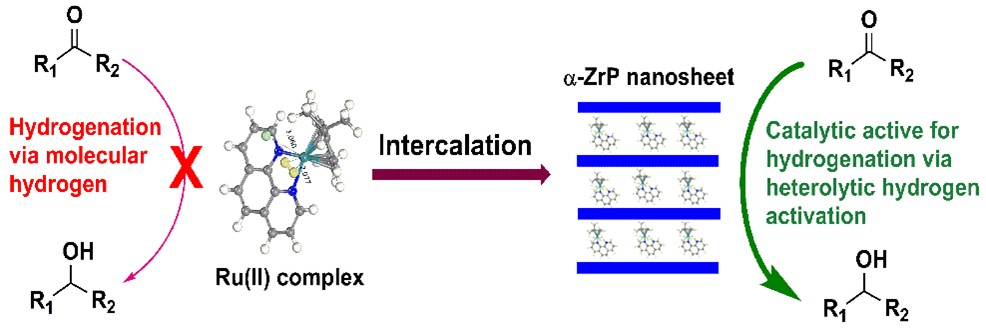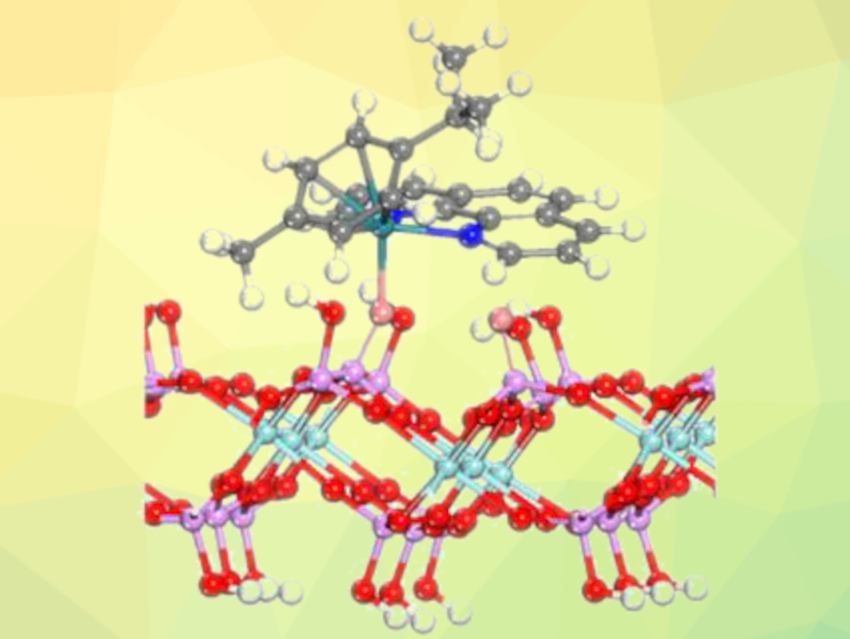Catalytic hydrogenations can be useful for the production of pharmaceuticals and fine chemicals in the chemical industry. Catalysts based on platinum-group metals are often used for this. Ru(II) complexes, for example, can be highly efficient catalysts for hydrogenations, but their stabilization, recyclability, and selectivity control still pose challenges for research.
Sheng Dai, Haifeng Wang, Zhenshan Hou, East China University of Science and Technology, Shanghai, Pengfei An, Beijing Synchrotron Radiation Facility (BSRF), China, and colleagues have developed a cationic Ru(II) complex intercalated into zirconium phosphate (ZrP) layers that enables the efficient catalytic conversion of furfural and other biomass-derived carbonyl compounds into the corresponding alcohols through selective hydrogenation of C=O group (pictured below). The team used the complex [(p-cymene)Ru(phen)Cl]Cl (Ru-phen; p-cymene = p-MeC6H4iPr, phen = 1,10-phenanthroline) and intercalated it between ZrP layers prepared via the exfoliation of α-ZrP using tetrabutylammonium hydroxide (TBAOH).

The ZrP layers act not only as a support for the Ru complex, but also provide new ligands to tune the Ru(II) center’s properties. The team found that due to a newly formed Ru–O–P active species stemming from the interaction between the complex and P–OH groups within the ZrP layers, the intercalated catalyst provides high performance and enables H2 to be activated and dissociated via heterolytic cleavage. This stands in contrast to the non-intercalated Ru-phen complex, which barely converts furfural under the same conditions.
- A Cationic Ru(II) complex Intercalated into Zirconium Phosphate layers Catalyzes Selective Hydrogenation via Heterolytic Hydrogen Activation,
Zhenshan Hou, Manyu Chen, Jie Xia, Huan Li, Xiuge Zhao, Qingpo Peng, Jiajia Wang, Honghui Gong, Sheng Dai, Pengfei An, Haifeng Wang,
ChemCatChem 2021.
https://doi.org/10.1002/cctc.202100599




